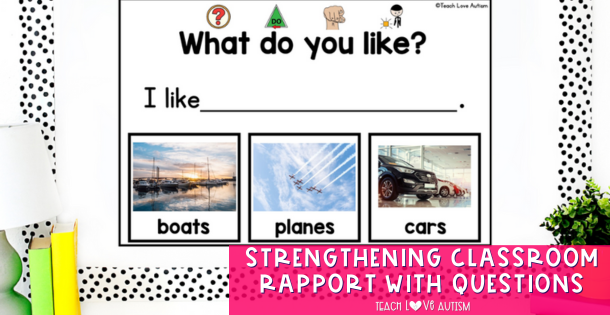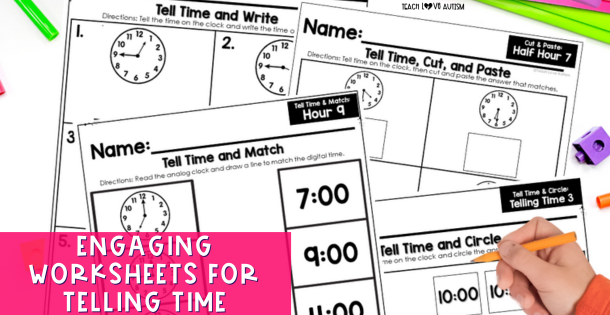I love reading children’s books to my students. It doesn’t matter their age, it can work for all types of situations if you have the right one. As a special education teacher, one of the most effective ways to...

I love reading children’s books to my students. It doesn’t matter their age, it can work for all types of situations if you have the right one. As a special education teacher, one of the most effective ways to introduce and reinforce classroom expectations is through engaging children’s literature. By incorporating stories into our teaching, we can create memorable experiences that help students understand the importance of rules, cooperation, and respect in the classroom. I previously did a post about books on bullying that I refer back to all the time.
In this blog post, I would like to share five exceptional children’s books that can assist teachers in teaching classroom expectations effectively at any time of the year. But let’s be honest during the back-to-school season, these get their workout in! These books not only educate but also entertain, making them valuable resources for any classroom. Let’s dive into the world of these captivating stories!
Children’s Books about Positive Behavior
“The Recess Queen” by Alexis O’Neill
Synopsis: Mean Jean is the Recess Queen, and nobody dares to challenge her authority. But when Katie Sue arrives, she tries a different approach by showing kindness and inclusion. This delightful story demonstrates the importance of treating others with respect, resolving conflicts peacefully, and embracing friendship
Why It’s Helpful: “The Recess Queen” is a perfect choice for addressing playground behavior and modeling positive social interactions. Through its relatable characters and engaging illustrations, this book teaches students about the value of empathy, fairness, and teamwork.
“No, David!” by David Shannon
Synopsis: Based on the author’s childhood experiences, “No, David!” tells the story of a mischievous little boy named David who constantly tests the boundaries of acceptable behavior. Despite his mistakes, David’s mother’s unconditional love and guidance help him understand right from wrong.
Why It’s Helpful: This book resonates with young learners as they see themselves in David’s impulsive actions. “No, David!” encourages discussions about self-control, following rules, and making responsible choices. By highlighting the consequences of inappropriate behavior, it reinforces the importance of classroom expectations.
Children’s Books about Following Directions
“Lacey Walker, Nonstop Talker” by Christianne C. Jones
Synopsis: Lacey Walker loves to talk—a lot! However, her classmates and teachers become frustrated by her constant chatter. Lacey soon realizes that her incessant talking hinders her ability to make friends and learn. With determination, she learns to balance her enthusiasm for talking with active listening.
Why It’s Helpful: “Lacey Walker, Nonstop Talker” helps address the common issue of excessive talking in the classroom. This book emphasizes the importance of listening skills, taking turns, and being mindful of others’ needs. It encourages self-reflection and prompts discussions about effective communication.
“Howard B. Wigglebottom Learns to Listen” by Howard Binkow
Synopsis: Howard B. Wigglebottom is a curious rabbit who struggles with paying attention and listening. Through a series of entertaining adventures, Howard discovers the benefits of active listening, following directions, and focusing on tasks.
Why It’s Helpful: “Howard B. Wigglebottom Learns to Listen” is an engaging story that provides practical strategies for enhancing listening skills. By exploring Howard’s challenges and successes, children learn about the importance of attentive listening, respect for other’s ideas, and following instructions—a must-read for any classroom.
Teaching Empathy with Children’s Books
“The Way I Act” by Steve Metzger
Synopsis: “The Way I Act” celebrates diverse personalities and behaviors in a positive light. Through vibrant illustrations and descriptive rhymes, this book explores different character traits, emotions, and values, such as responsibility, honesty, and kindness.
Why It’s Helpful: This book promotes self-awareness and understanding of others, creating an inclusive and accepting classroom environment. “The Way I Act” allows teachers to engage students in discussions about respect for differences, building empathy, and cultivating a positive classroom community.
If you are looking for another way to teach empathy to your students, teaching about emotions can also be a great way to do that. The image above shows something I have used with my students in the past!
Children’s books have a magical way of imparting important lessons while captivating young minds. By incorporating these five remarkable books into your back-to-school routine, you can effectively teach and reinforce classroom expectations. Through engaging stories and relatable characters, students will develop a deeper understanding of respect, responsibility, communication, and empathy. So, gather your students around, embark on these literary adventures, and watch as their understanding of classroom expectations blossoms!
The post 5 Children’s Books You Must Read at the Beginning of the School Year appeared first on Shop | Teach Love Autism.

















